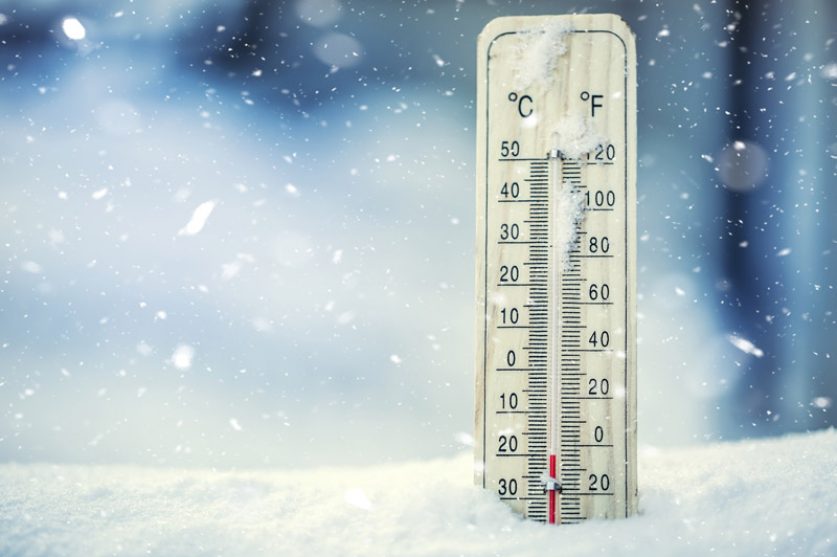
After a blistering summer, UK residents might be welcoming the approach of autumn and cooler temperatures, eagerly stashing away fans and swimsuits and pulling jumpers and duvets out of cupboards.
But if last year’s winter is anything to go by, once you turn on those radiators, they may be running until nearly April—and you’ll see the damage on your energy bills.
If you’ve signed up for a direct debit with an energy company, your costs should be spread evenly throughout the year, so you won’t be confronted with steep wintertime bills after a summer of paying very little. But those bills will be based on average (and in some cases estimated) usage so if you attempt to recreate beachside balminess in your front room with your central heating, you could face an unpleasant bill shock when you come to settle up.
But you can keep warm and toasty without breaking the bank, even if we have to tackle another Beast from the East. Here are some tips for keeping your energy bills under control this winter, no matter what our changing climate throws at Britain.
- Turn down your thermostat and put on a jumper
Two thirds of the energy used by UK households is for heating our domestic spaces, and this accounts for half of our bills: an average of £600 a year. The colder the weather turns, the more energy you’ll need to keep your home comfortable. But while you don’t have control over the weather, you can rein in your heating energy use and costs by being conscious, and maybe putting on a few extra layers.
Are you basking in a balmy 21°C all winter long, barefoot and in a t-shirt? Turning your thermostat down by just one degree centigrade can cut your heating bills by 10%, saving you upwards of £85 a year. You’ll hardly notice the difference and if you do, you can easily don a jumper. Make use of radiator valves to turn heat down or off in rooms you’re not using—there’s no sense heating your bedroom while the family is congregating in the kitchen and living room, for instance. Speaking of the kitchen, the heat from ovens and other appliances could allow you to dial down the thermostat as you’re cooking dinner, or washing your thermal underwear.
Make sure you’re turning your heat down or off when no one is home—a timer or smart thermostat can crank it up shortly before you arrive home—and at the night crank down the thermostat and snuggle under a duvet. Flannel sheets will keep you snug and a hot water bottle can help with chilly feet.
- Get smart with your heat
If your boiler is compatible, consider getting a smart thermostat, which, via a smartphone app, can give you complete control of your heat. Set timers, adjust heating or turn it on or off remotely, and track your past usage patterns to ensure you’re heating your home exactly—and only—the way you need it.
- Insulate your home and block draughts
Without proper insulation, you lose a third or more of the cost of heating your home directly through your walls. Cavity wall and solid insulation can both trim up to hundreds from your heating bill, depending on the size of your home. Loft insulation can cut even more.
If you can’t afford to fully insult your home this winter, you can still insure your boiler doesn’t have to work as hard and your feet stay warmer by cutting down on draughts. Use draught-proof strips around windows and around the sides of doors and draught excluders at the base of doors. Block off chimneys if you don’t use your fireplace.
- Use energy efficient lightbulbs—and turn off the lights!
The days are shorter and your garden so much less inviting under an inch of frost, so you’ll probably be staying indoors more and using more lighting. Carve money off your electricity bill by switching to LED bulbs. They cost more than standard bulbs but they’re ten times as efficient. If you swapped every light bulb in your house for an LED bulb you could save up to £240. Install dimmer switches and cast your cozy winter evenings in the subtle glow of mood lighting. It’s very hygge— and energy efficient.
Also remember your mother’s nagging and turn lights off in rooms you’re not using and all lights before you leave the house.
- Use a smart meter to monitor your energy use
Under the smart meter rollout programme, by the end of 2020 every household in the UK will have a smart meter to more carefully monitor their energy consumption in real time, in units of energy and in pounds and pence. If you already have one, get in the habit of consulting it regularly: many are compatible with smartphone apps, so you won’t have to be opening your meter box multiple times a day. Try changing your behaviours—turning down your thermostat a degree or two and putting on socks, turning off lights in empty rooms—and seeing how the savings register on your smart meter, and ultimately your bill. Recruit your family members and see how much you can par off your energy costs this winter.
- Switch tariff and provider
An estimated 11 million UK households are on expensive standard energy tariffs, often because they haven’t reassessed their supply in several years and the fixed energy deal they signed up for has expired.
If you haven’t changed energy tariff in three years, you’re likely paying over the odds for your gas and electricity. You can rack up huge savings—up to £300 a year—by simply shopping around and switching supplier. Use a price comparison website to find the best deal in your postcode.




